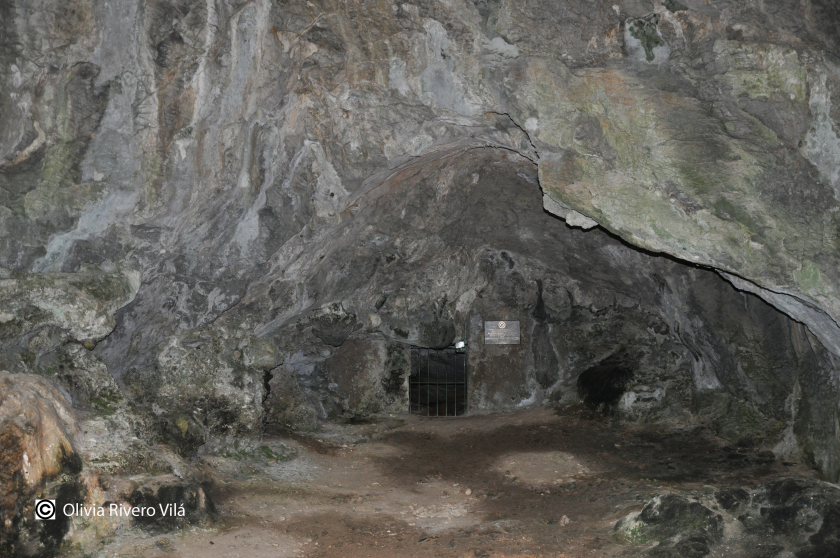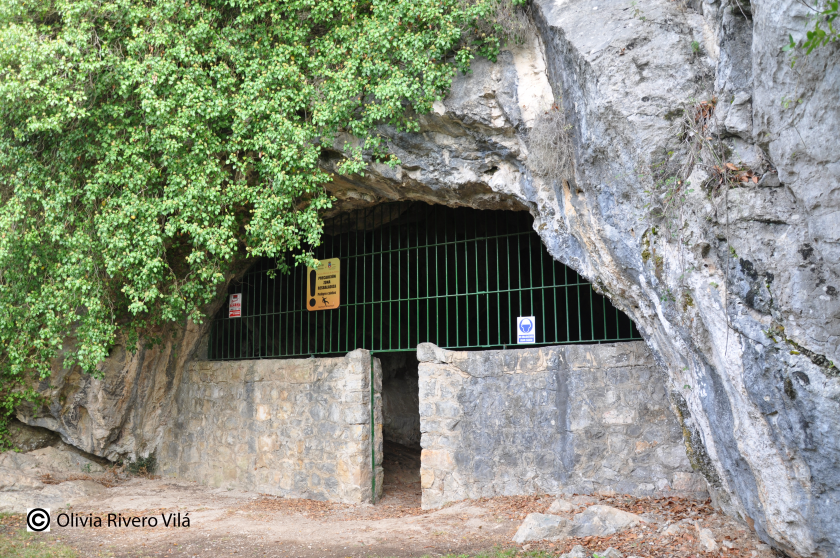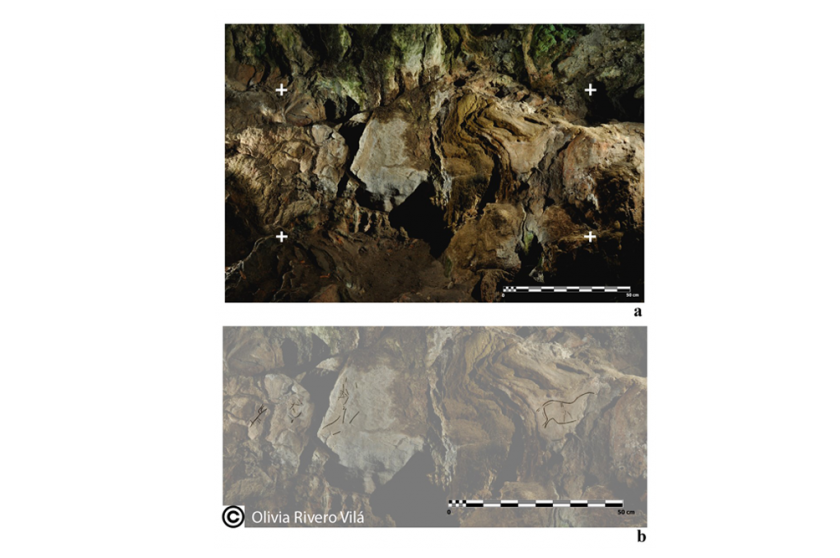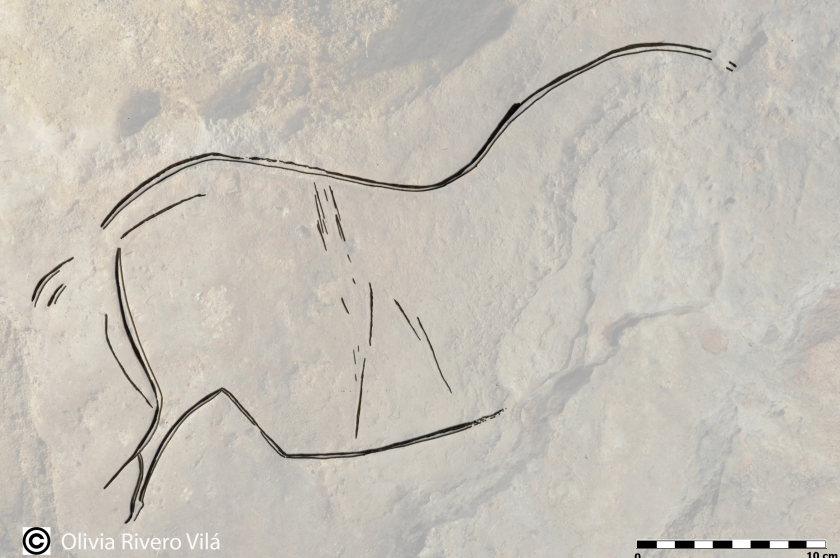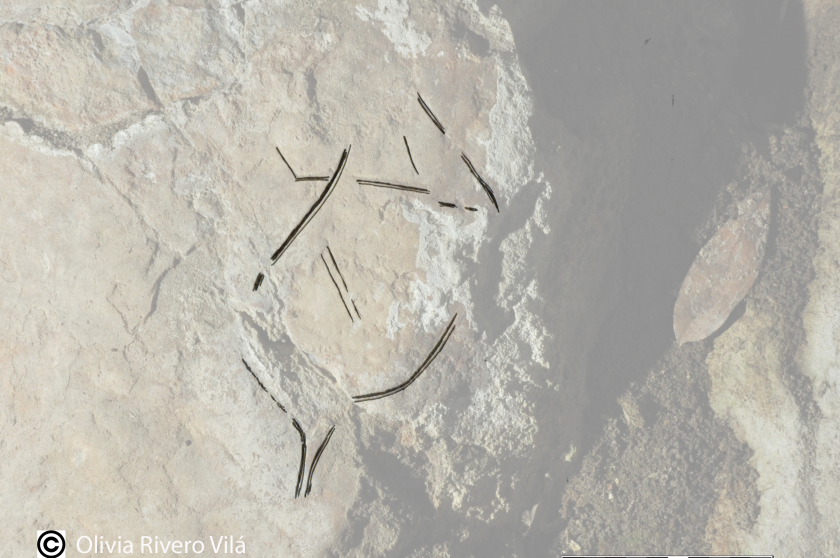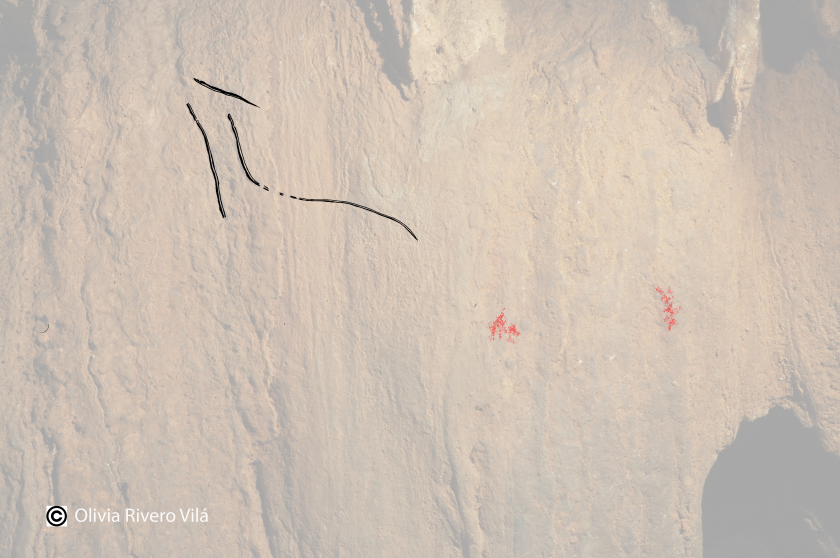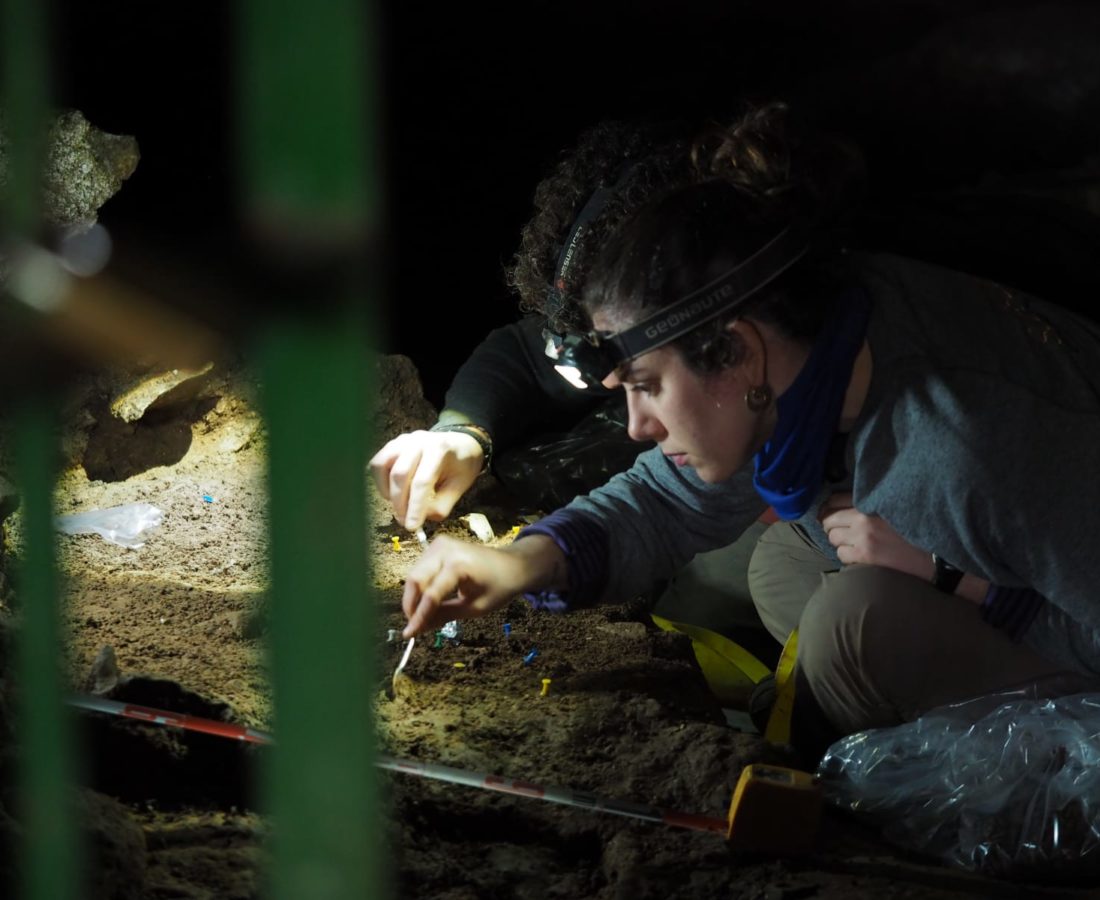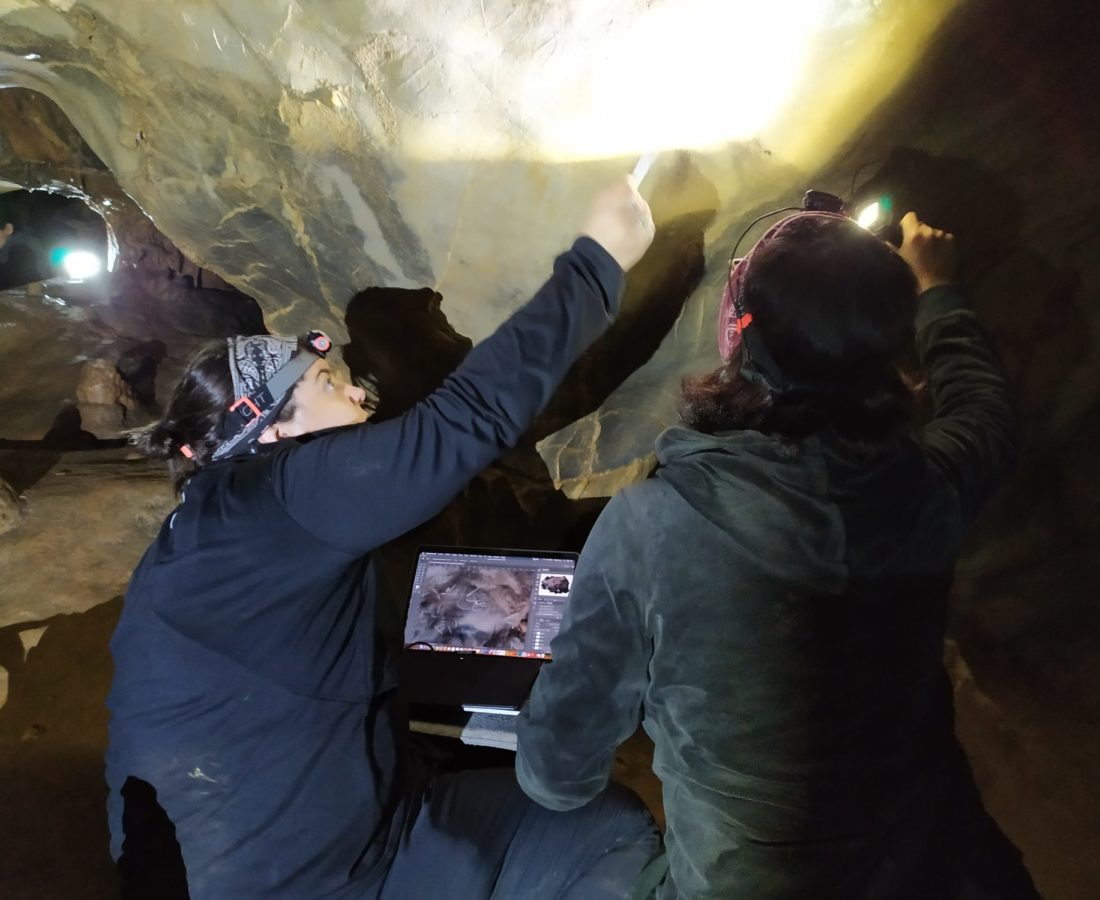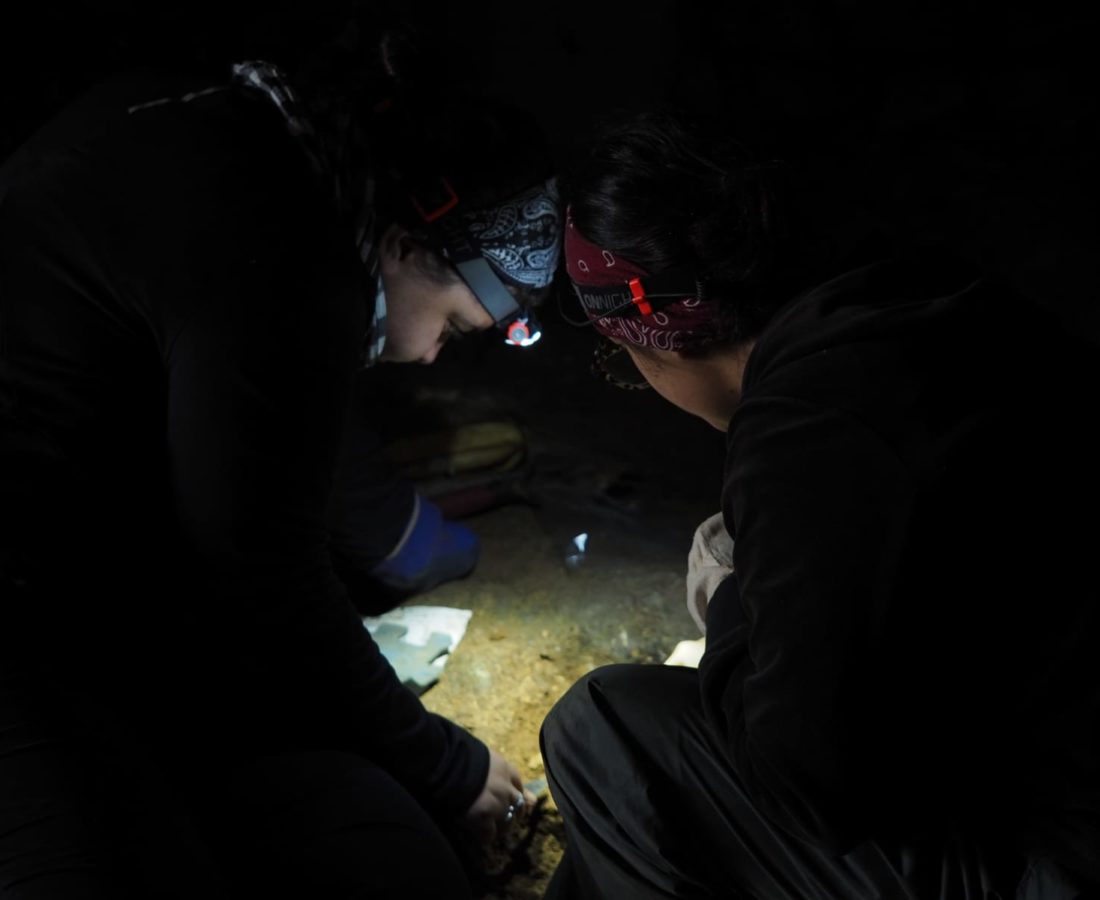Hornos de la Peña
Principal researcher: Olivia Rivero
Hornos de la Peña cave is located in the mountain called La Peña, next to which it flows the river Tejas, a tributary of the Besaya. The mouth of the cave opens about 60 m over the small valley of the river Tejas.
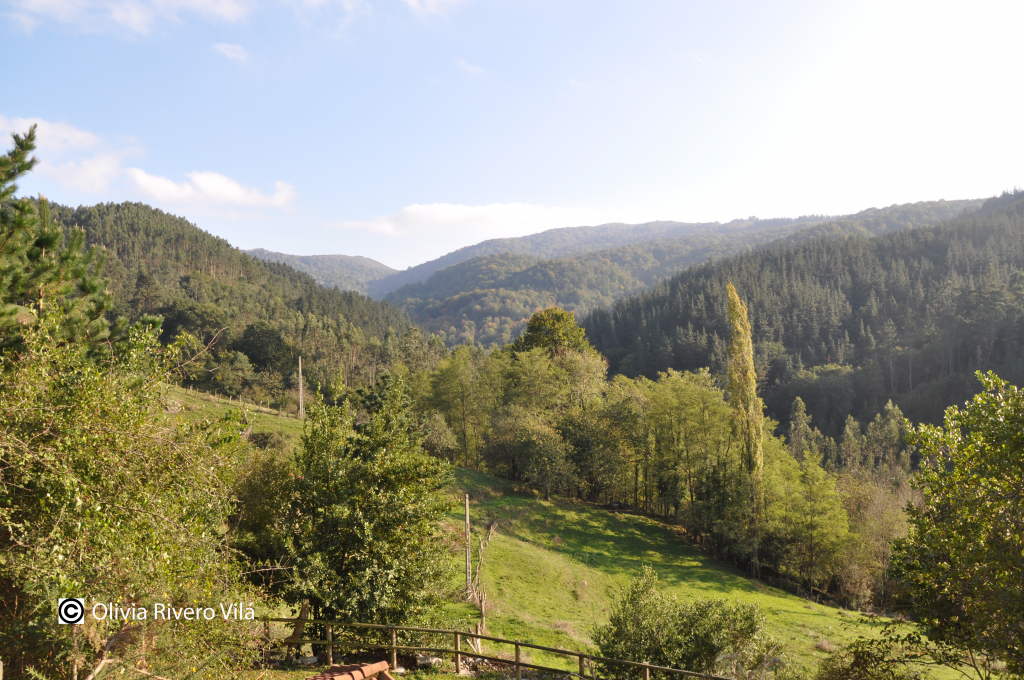
The cavity is oriented towards the South. The entrance is preceded by a large shelter with a 7 meters high by 4 meters wide entrance arch, which forms a large room of 16 m deep in which the archeological site was located. Following this hall begins a narrow gallety with a long hallway that ends in a kind of rotunda, where the vast majority of the parietal representations are located.
The cave was discovered in 1903 by H. Alcalde del Río, who published the first reading of the representations in 1906, later increased in the publication that he made together with H. Breuil and L. Sierra in 1911. The parietal art was re-studied by A. Leroi-Gourhan in 1965 and by J. Ucko between 1971 and 1973. In 1989 was published an ensemble of unknown figures (García Morales, 1986-87). Later, C. González Sainz carried out a study about the photograph of the currently lost hall block, discovering a new representation of a hind associated with a bison (González Sáinz, 2002). Finally, Gálvez Lavín and Cacho Toca have elaborated a synthesis of the current knowledge about the ensemble of parietal art, within the work Las cuevas con Arte Paleolítico en Cantabria (2010).
From 2013 to 2018 six consecutive interventions have been carried out in the cave aimed at reviewing and documenting all the Paleolithic parietal art in the cavity. These campaings had the objective of prospecting, documenting and restitution of the graphic entitites, as well as their technical and morphological analysis.
Thanks to this exhaustive documentation, it has been possible to identify a series of unpublished figures, among which it stands out a series of engraved representations of trilinear hinds (Rivero y Garate, 2013) , both on the outside and the inside of the cave. These representations show that Hornos de la Peña cave had an ensemble of pre-Magdalenian chronology engravings that can be related to other ensembles such as the Asturian La Lluera or La Viña or the Cantabrian cave of Chufín. Both the trilinear hinds and the horse of that same panel can be seen in the next 3D reconstruction.
These discoveries show the importance of the pre-Magdalenian occupation at the archeological site.
In 2016 and 2017, it was also carried out a geological and geomorphological study which have made it possible to identigy the Geological Units that emerge in the cave area, as well as to indentify and analyze the spatial distribution of the different kars forms.
From 2016, the cave investigation has been complemented with an archeological excavation, revealing a sequence of 12 levels, ranging from the Musterian to the Magdalenian. These levels have been dating using C14 and U/Th in order to verify the different times of occupation of the cavity. In Ríos-Garaizar et al., are presented the preliminary results of the excavations carried out within the framework of this project led by Olivia Rivero. In addition, the final corrections of the rock art study have been carried out, using new techniques of digital tracing and photogrammetry.
